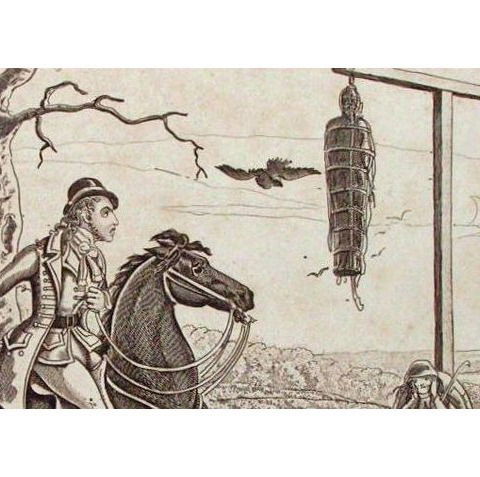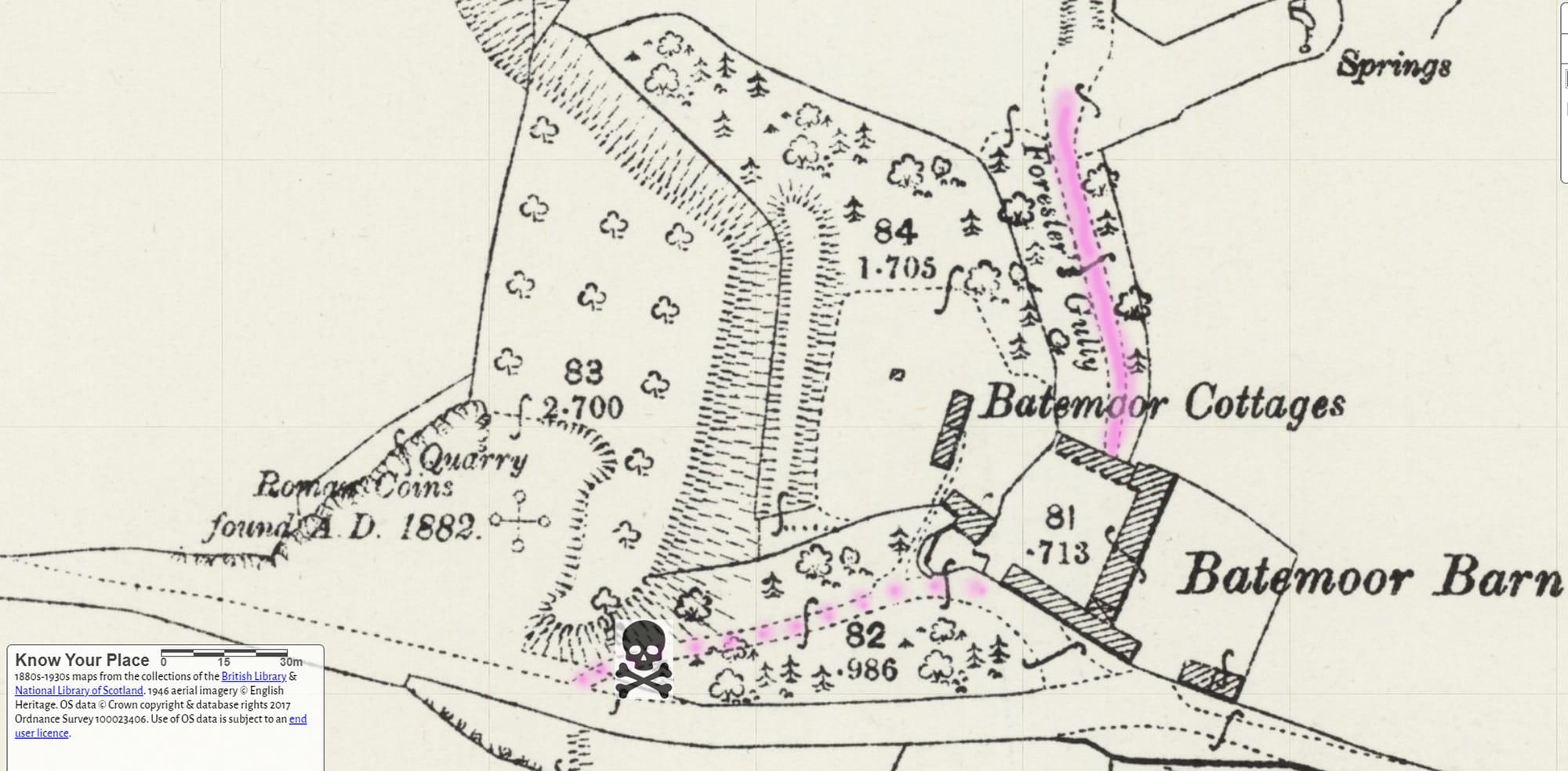The Gruesome Tale of Richard Forster

(Image from UWE blog)
In the late 18th and early 19th centuries a judge could require that a prisoner's execution should be performed by 'gibbetting', otherwise known as being 'hung in chains'. This was the horrendous practice of leaving the poor soul hung in a 'gibbett' cage until death; it was sanctioned by the Murder Act of 1752 but outlawed in 1834. If you Google 'gibbett cage' you will see there were multiple designs of cage/chains. Often used for the execution of highwaymen, gibbett cages were hung in public view (eg on crossroads) to act as a deterrent.
There is a local tale of a highway man who was gibbetted near Batemore Barn, in the deep cutting where Forester's Gulley meets the Ham Hill road. The screenshot below is taken from the 1894-1903 OS map on the excellent Know Your Place (KYP) west website; I have highlighted Forester's Gulley in pink and the cutting joining it to the Ham Hill road in a dotted pink line. I have marked the place where the gibbett cage could have been hung with a skull and crossbones.

The outlaw's name may have been Richard Foister (Wikishire) or Forester, Forster or Foster. The earliest place I've seen the tale recorded was in a SANHS article of 1912 (vol 58(2) pp 45-52) entitled Hamdon or Ham Hill S. Somerset - Notes on its early occupation - and afterwards, by R. Hensleigh Walter M.B. The tale was also related in the Somerset County Herald published Saturday March 13 1948; I have copied the newspaper column underneath the following extract from R. Hensleigh Walter's 1912 article:
"To pass to more recent times. During the early coaching days probably in the first half of the XVIII Century one of the chief coach-roads from London to the West passed over Ham Hill. At the present time a deep cutting may be seen a little to the east of the present road, in which this coach-road lay. The writer has been told by an old man that the latter's grandfather well remembered as a boy having seen the coach toiling up over the Hill with a team of oxen yoked in front to assist the horses. On this road, as it approaches Odcombe, is a mile-stone 127 miles to London which stands near a spot named "Five-Ashes," so called from the fact of five pollard ash-trees, set in a quincunx, having been planted at the crossroads. This method of planting ash-trees appear to have been customary to denote a meeting-place for pilgrims on their way to Glastonbury. There was another similar cluster of trees at the cross-roads near Tintinhull on the Fosse Way. Various legends abound regarding the coach-road over the Hill in the "good old days," the most striking of which has reference to a certain highwayman named Forster, who, it is said, was captured, hung up in an iron cage and left to starve. It is said that his cries could be heard for miles around, and that a woman of Witcombe near by took pity on him and fed him with tallow-candles. Rumour says that even now, at dead of night, the shrieks of the poor wretch may be heard. The deep cutting running from the coach-road by Bedmore Barn towards Montacute is still known as Forster's Gully."
